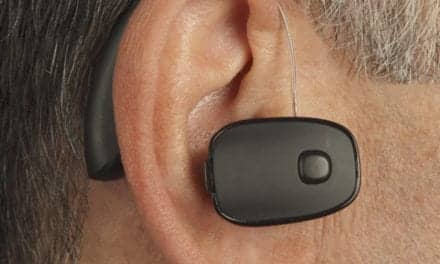Summary:
A study by Stanford University validates Starkey’s AI-powered Balance Assessment feature, which uses motion sensors in hearing aids to assess fall risk, offering a new tool for proactive health monitoring.
Key Takeaways:
- AI-Powered Fall Risk Assessment: Starkey’s hearing aids utilize motion sensors and AI to measure balance and identify individuals at higher fall risk.
- Clinical Validation: Stanford’s research found strong agreement between hearing aid sensor data and clinician assessments, confirming the technology’s accuracy.
- Increased Accessibility: This innovation makes fall risk evaluation more accessible, particularly benefiting those in underserved areas with limited access to specialized care.
A recent peer-reviewed article, published in Otology & Neurotology, highlights the collaborative research between Starkey and Stanford University to validate Starkey’s Balance Assessment feature available with Edge AI.
Falls are a leading cause of injury for older adults, and Starkey is addressing this issue with hearing technology that does more than just improve hearing. Starkey’s Balance Assessment feature uses advanced motion sensors and artificial intelligence (AI) to measure factors related to fall risk. The study, conducted by Stanford, evaluated how well this technology automatically scores results compared to scoring recorded by healthcare professionals.
“Starkey is dedicated to pushing the boundaries of what hearing aids can do by integrating advanced health and wellness technologies,” said Achin Bhowmik, PhD, chief technology officer and executive vice president of engineering at Starkey. “This research collaboration with Stanford Medicine demonstrates the potential of leveraging artificial intelligence and motion sensor technology to address critical health challenges like fall risk. By validating our Balance Assessment feature, we are taking a significant step toward empowering patients to proactively monitor their health and improve their quality of life.”
According to the company, the Balance Assessment feature is a first-of-its-kind tool designed to identify patients who may be at a higher likelihood of falling and encourage them to seek additional balance testing, if applicable. The assessment is done through the My Starkey app, which gives visual and audio instructions. Using the Center for Disease Control and Prevention’s (CDC) Stopping Elderly Accidents, Deaths & Injuries (STEADI) protocol, the assessment goes through a questionnaire and three functional balance assessments. The sensors onboard the hearing aid are used to measure the movements and work with the My Starkey app to score each test based on age-based norms.
This double-blind study evaluated the efficacy of Starkey’s Edge AI Balance Assessment feature by comparing scores from trained observers to data captured by the sensors onboard the hearing aids (IMU-HAs). Researchers found agreement between the trained observers and the IMU-HAs that is highly encouraging for the remote self-identification of patients at a greater risk of falling.
“This study is a game-changer in fall risk assessment. Our findings show that hearing aids with built-in motion sensors and AI can accurately evaluate balance, just like trained clinicians,” says Kristen K. Steenerson, MD, departments of Otolaryngology–Head and Neck Surgery and Neurology & Neurological Sciences at Stanford Medicine. “This breakthrough makes fall prevention more accessible than ever, especially for those with limited access to specialized care. Empowering patients with real-time health insights through their hearing aids is an exciting step toward reducing fall-related injuries and improving quality of life.”
As hearing loss continues to gain recognition as a significant risk factor for falls, hearing aid adoption provides an excellent avenue to educate and encourage patients to monitor their balance and seek further evaluation when necessary. This is particularly impactful for patients in underserved areas with limited access to vestibular screenings.
According to the company, Starkey is the first and only hearing aid manufacturer to offer a fall detection and alert system, and with Edge AI, Starkey has developed the first self-guided balance assessment exercise built directly into hearing aids, allowing users to take control of their health and reduce their fall risk.
You can read the full paper here.





